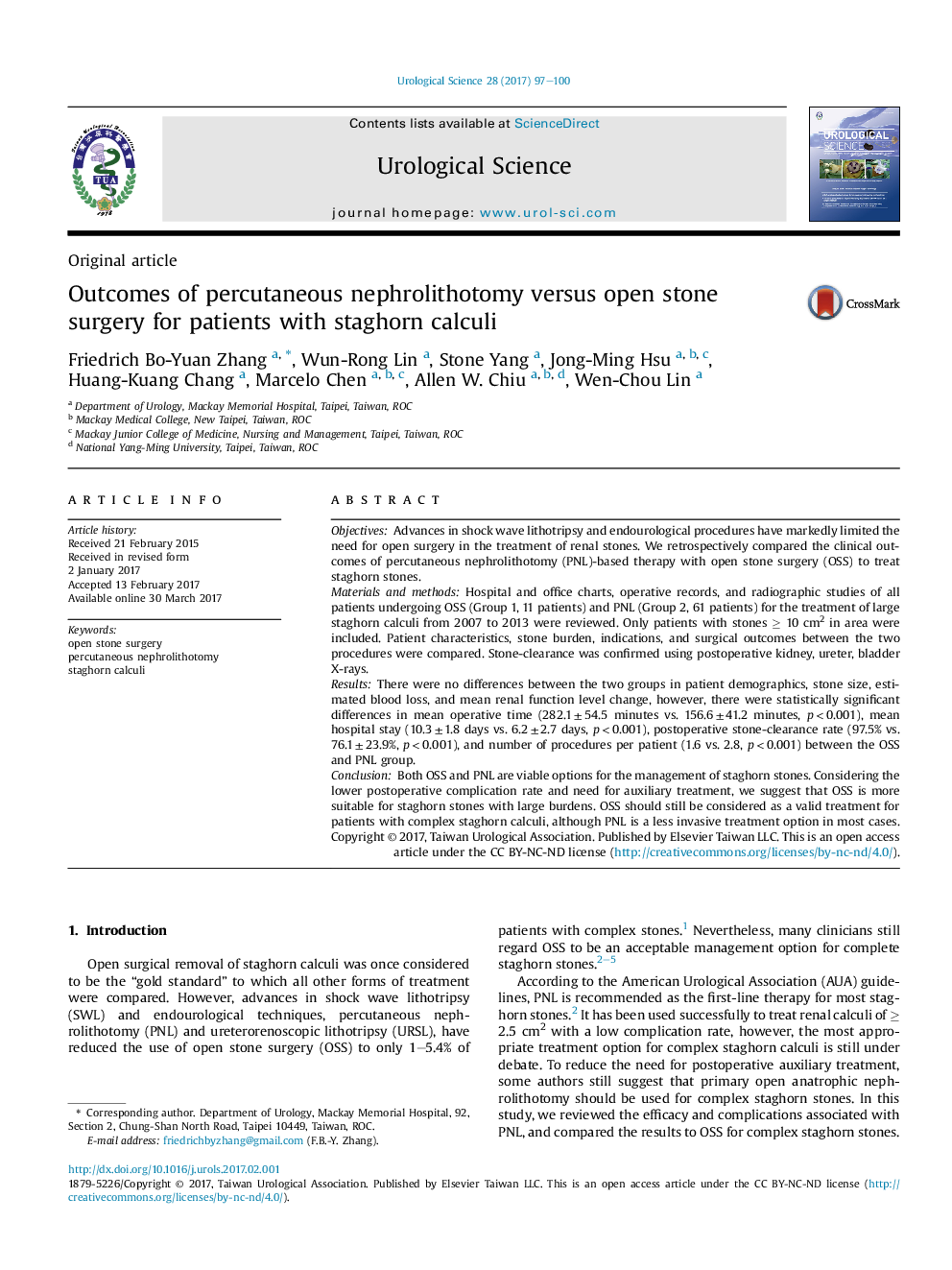| Article ID | Journal | Published Year | Pages | File Type |
|---|---|---|---|---|
| 5730673 | Urological Science | 2017 | 4 Pages |
ObjectivesAdvances in shock wave lithotripsy and endourological procedures have markedly limited the need for open surgery in the treatment of renal stones. We retrospectively compared the clinical outcomes of percutaneous nephrolithotomy (PNL)-based therapy with open stone surgery (OSS) to treat staghorn stones.Materials and methodsHospital and office charts, operative records, and radiographic studies of all patients undergoing OSS (Group 1, 11 patients) and PNL (Group 2, 61 patients) for the treatment of large staghorn calculi from 2007 to 2013 were reviewed. Only patients with stones ⥠10 cm2 in area were included. Patient characteristics, stone burden, indications, and surgical outcomes between the two procedures were compared. Stone-clearance was confirmed using postoperative kidney, ureter, bladder X-rays.ResultsThere were no differences between the two groups in patient demographics, stone size, estimated blood loss, and mean renal function level change, however, there were statistically significant differences in mean operative time (282.1 ± 54.5 minutes vs. 156.6 ± 41.2 minutes, p < 0.001), mean hospital stay (10.3 ± 1.8 days vs. 6.2 ± 2.7 days, p < 0.001), postoperative stone-clearance rate (97.5% vs. 76.1 ± 23.9%, p < 0.001), and number of procedures per patient (1.6 vs. 2.8, p < 0.001) between the OSS and PNL group.ConclusionBoth OSS and PNL are viable options for the management of staghorn stones. Considering the lower postoperative complication rate and need for auxiliary treatment, we suggest that OSS is more suitable for staghorn stones with large burdens. OSS should still be considered as a valid treatment for patients with complex staghorn calculi, although PNL is a less invasive treatment option in most cases.
